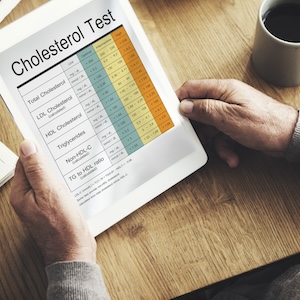Management and clinical outcomes of patients with homozygous familial hypercholesteremia in Saudi Arabia

All claims expressed in this article are solely those of the authors and do not necessarily represent those of their affiliated organizations, or those of the publisher, the editors and the reviewers. Any product that may be evaluated in this article or claim that may be made by its manufacturer is not guaranteed or endorsed by the publisher.
Authors
We report the incidence, patient characteristic with clinical outcomes in patients with homozygous familial hypercholesterolemia (HoFH) in Saudi Arabia. This is a retrospective and prospective, single center study which included 37 patients 14 years and older enrolled and followed up between 2018-2021 for three years. 46% were females, 78% were offspring of consanguineous marriage. LDLR mutation was in 78% and LDL-C/LDLRAP in 3% of patients. Mean LDL-C at the first presentation was 14.2±3.7 mmol/L, average Dutch lipid score was 20.9±6.24. LDL apheresis was performed on 70% of patients. Most patients were on ezetimibe (92%), high-dose statins ( 84%) and PCSK9 inhibitors (32%). 48.6% had aortic stenosis, out of which 30% had severe aortic stenosis. Ten underwent aortic valve surgery (5 mechanical valve, 3 Ross procedure, 1 aortic valve repair, 1 bioprosthetic valve) and one had transcatheter aortic valve implantation (TAVI). Coronary artery bypass surgery (CABG) was performed on 32% and percutaneous intervention (PCI) on 11% of patients. HoFH patients have complex diseases with high morbidity and mortality, and benefit from a highly specialized multidisciplinary clinic to address their clinical needs. Although there are several therapeutic agents on the horizon, early diagnosis, and treatment of HoFH remain critical to optimize patient outcomes.
Department of Medicine, School of Medicine, Wayne State University, Detroit, MI, USA
How to Cite

This work is licensed under a Creative Commons Attribution-NonCommercial 4.0 International License.






